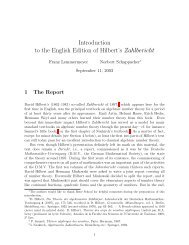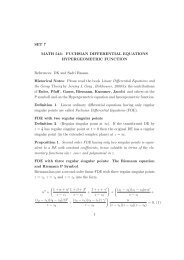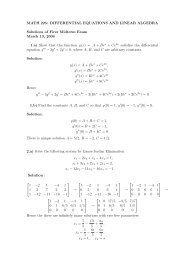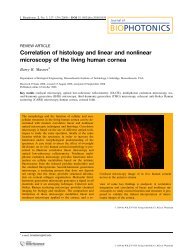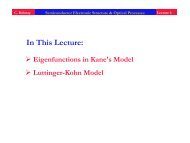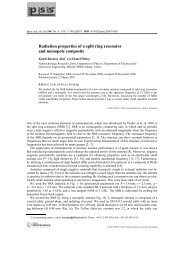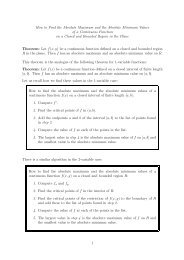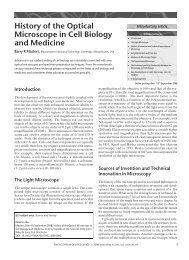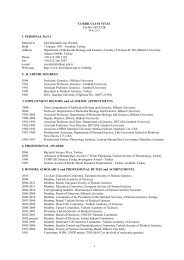You also want an ePaper? Increase the reach of your titles
YUMPU automatically turns print PDFs into web optimized ePapers that Google loves.
for computing an integer a such that a ≡ r mod m and a ≡ s mod n. <strong>The</strong> first<br />
idea is to see whether a can be written as a linear combination <strong>of</strong> r and s, that<br />
is, to look for integers x, y such that a = xr + ys. Reduction modulo m gives<br />
r ≡ a = xr + ys mod m. (7.1)<br />
<strong>The</strong> simplest way to achieve this is by taking x = 1 and y = 0. But observe<br />
that we also need<br />
s ≡ a ≡ xr + ys mod n. (7.2)<br />
Thus we need more leeway. <strong>The</strong> right idea is to observe that (7.1) will be<br />
satisfied if only x ≡ 1 mod m, y ≡ 0 mod m. Similarly, (7.2) will be satisfied if<br />
x ≡ 0 mod n and y ≡ 1 mod n.<br />
Is it possible to satisfy these four congruences simultaneously? Let’s see:<br />
x ≡ 0 mod n and y ≡ 0 mod m mean x = an and y = bm for some a, b ∈ Z. <strong>The</strong><br />
two other congruences boil down to x = an ≡ 1 mod m and y = bm ≡ 1 mod n.<br />
But these are both solvable since gcd(m, n) = 1, so n has an inverse a modulo<br />
m, and m has an inverse b modulo n. Inverses can be computed using Bezout,<br />
and collecting everything we now can see where the formulas in the above pro<strong>of</strong><br />
were coming from.<br />
Combining the formulas for <strong>Euler</strong>’s phi function for prime powers and for<br />
products <strong>of</strong> coprime integers, we now find that an integer<br />
has exactly<br />
residue classes coprime to m.<br />
m = p a1<br />
1 · · · par r<br />
Chinese Remainder <strong>The</strong>orem<br />
φ(m) = (p 1 − 1)p a1−1<br />
1 · · · (p r − 1)pr<br />
ar−1<br />
= p a1<br />
1 · · · par r · p1 − 1<br />
· · · pr − 1<br />
p 1 p r<br />
= m<br />
(1 − 1 )<br />
· · ·<br />
(1 − 1 )<br />
p 1 p r<br />
In the pro<strong>of</strong> <strong>of</strong> the multiplicativity <strong>of</strong> <strong>Euler</strong>’s phi function we have shown that,<br />
given a system <strong>of</strong> congruences<br />
x ≡ a mod m<br />
y ≡ b mod n<br />
can always be solved if m and n are coprime. This result, or rather its generalization<br />
to system <strong>of</strong> arbitrarily many such congruences, is called the Chinese<br />
Remainder <strong>The</strong>orem.<br />
69




